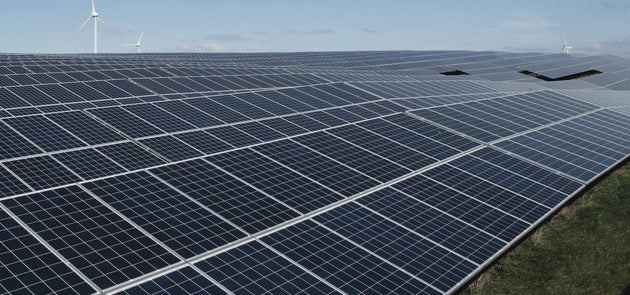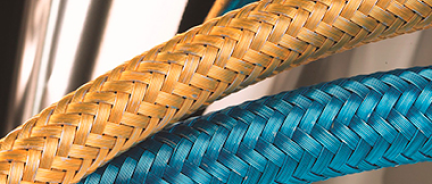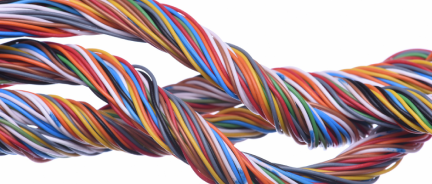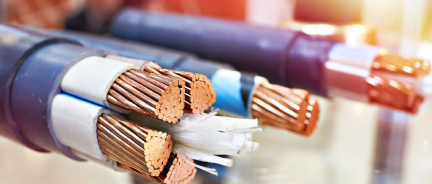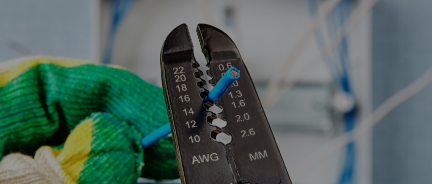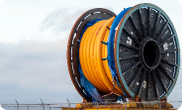Explaining NEC Article 600 on Electric Signs and Outline Lighting
Electric signs and outline lighting are highly visible, safety-critical systems with unique code requirements for conductors, grounding, and equipment access. They are the focus of Article 600 of the National Electric Code.
Every commercial building needs a visual identifier, and more often than not, that comes in the form of an electric sign. For this reason, NEC Article 600 is necessary for anyone involved in industrial or commercial work.
What Does NEC Article 600 Cover?
Article 600 applies to the installation of conductors and equipment for:
-
Electric signs (fixed, mobile, or portable)
-
Outline lighting
-
Section signs (modular signage systems)
-
Skeleton tubing (neon or similar lighting not enclosed)
-
Retrofit kits for modifying existing signs
It focuses on everything from wiring methods and protection to safe placement and maintenance access. Even decorative or artistic neon tubing is included under this scope.

Equipment Listing and Definitions
All electric signs and outline lighting must be listed and labelled per UL or equivalent standards. This includes:
-
Sign assemblies
-
Power supplies
-
Retrofit kits
-
Neon tubing components
Key Definitions (600.2)
-
Electric Sign: A self-contained, illuminated display using letters, symbols, or graphics.
-
Outline Lighting: Lamps or discharge lighting used to trace architectural features.
-
Section Sign: A modular sign system requiring field-installed wiring.
-
Skeleton Tubing: Exposed neon tubing not attached to an enclosure.
Factory-assembled systems must be installed in accordance with their listings. Field-installed outline lighting and skeleton tubing must comply with NEC Chapter 3 wiring methods.
Branch Circuit Requirements
-
Dedicated circuit: Each sign must have its own 20A minimum branch circuit with no other connected loads [600.5]. This circuit can serve multiple outlets within one load.
-
Sign outlets: At least one sign outlet is required at every pedestrian-accessible entrance to a tenant space.
-
Terminations: Sign wiring must terminate in an enclosure, junction box, or conduit body.
-
Pole-mounted signs: Poles may contain conductors if compliant with 410.30(B).
All circuits must be controlled by a disconnecting means that opens all ungrounded conductors.
Disconnecting Means
Every sign must have a clearly labelled, externally operable disconnect that:
-
Is within sight of the sign or outline lighting it controls [600.6]
-
Is lockable in the open position (must have an integrated lock provision)
-
Disconnects all ungrounded conductors
If the sign is controlled by an external controller (electronic or electromechanical):
-
The disconnect must be located within sight of or inside the controller enclosure
-
Must be capable of disconnecting both the sign and the controller
Portable locks do not meet NEC requirements; the lock provision must be part of the equipment.
Grounding and Bonding
Signs and associated metal equipment must be grounded using an equipment grounding conductor (EGC) per 250.118 and sized according to 250.122.
Acceptable Termination Methods [250.8]:
-
Listed pressure connectors
-
Terminal bars
-
Exothermic welding
-
Listed machine screws or self-tapping screws (engaging 2+ threads)
Optional Auxiliary Electrodes [600.7(A)(4)]:
-
Not required, but allowed
-
Do not need to meet 25-ohm or bonding requirements
-
Cannot serve as the primary ground-fault return path
Remember: the earth is not an effective ground-fault current path.
Location and Clearances
-
Vehicle-clearance height: At least 14 ft above areas accessible to vehicles unless mechanically protected [600.9(A)]
-
Overhead conductors: Minimum 18 ft clearance over public areas (per 225.18)
-
Pedestrian-accessible neon: Must be physically protected [600.9(B)]
-
Combustibles: Keep at least 2 inches from incandescent or HID lamps [600.9(C)]
-
Wet locations: Sign must be weatherproof and have drain holes [600.9(D)]
Portable and Mobile Signs
-
Must be readily movable without tools and properly supported [600.10]
-
Must use an attachment plug (hardwiring not allowed)
-
Cord types for wet locations: Junior hard service (SJTW, SJEOW) with factory-installed GFCI
-
Cord types for dry locations: SP-2, SPE-2, SPT-2 or heavier
-
Max cord length: 15 feet
Flexible cords must not run above or through suspended ceilings (per 400.8).
Ballasts, Transformers, and Power Supplies
These components must be:
-
Accessible and securely fastened [600.21]
-
Installed with minimal secondary conductor length
-
Located in an enclosure with adequate working space (minimum 3 ft x 3 ft x 3 ft if not in sign)
Installations in Attics or Soffits:
-
Must include: access door, 3 ft x 22.5 in passage, 1 ft wide permanent walkway
-
Must have: a lighting outlet controlled at the entry, placed near the equipment
Above Suspended Ceilings:
-
Enclosures must be fastened independently of the ceiling grid [600.21(F)]
-
No flexible cords allowed for connections
Wiring Methods and Cable Types
NEC 600 requires wiring methods that protect conductors from mechanical impact (such as in public or vehicle-accessible areas), prevent water intrusion in wet-location signage, and ensure routing stability in elevated or modular sign systems exposed to wind, vibration, or thermal cycling.
Approved Conduits and Assemblies:
-
EMT (Electrical Metallic Tubing): Widely used for branch circuits in commercial buildings. Durable and easy to bend.
-
FMC (Flexible Metal Conduit): Good for short runs or where flexibility is needed for vibration or layout.
-
LFMC (Liquidtight Flexible Metal Conduit): Used where moisture or oil exposure is a factor.
-
MC Cable (Metal-Clad): This is a combination of both the cable and the conduit, making it convenient for indoor sign branch circuits. It is commonly used in indoor sign installations and contains conductors in aluminium armour.
-
TC-ER Cable (Tray Cable – Exposed Run): Suitable for specific outdoor applications where an exposed run is possible; the cable must be resistant to sunlight, oil, and moisture.
Common Conductor Types:
-
THHN/THWN-2: Heat- and moisture-resistant conductors used inside conduit for both dry and wet locations. These are the go-to wires to run through EMT, FMC, or LFMC conduit.
-
UF Cable (Underground Feeder): Can be used in pole-fed signs or for direct burial when permitted, when the signs are fed from an underground raceway and trench.
-
Flexible Cords: Used inside signs or portable signs. Must be listed for signage use and appropriately rated for temperature, flexibility, and abrasion resistance. Depending on the conditions, SJT, SJTW, SJEOW, and SOOW can be used.
Cable Selection Considerations:
-
Cables exposed to the elements must be UV-resistant.
-
Conductors inside enclosures must be installed to avoid heat buildup and prevent contact with moving or hot parts.
-
All wiring outside of factory-built signs must use listed raceways or cable assemblies that are approved for the specific environment.
At Nassau National Cable, you’ll find cable types suitable for Article 600 installations, including:
-
TC-ER cable in various jacket colors and conductor counts
-
MC cable with stranded THHN conductors and armor rated for physical protection
-
Cut-to-length THHN/THWN-2 for use inside conduit
-
Pre-listed flexible cords for internal sign connections
Final Thoughts
NEC Article 600 provides a comprehensive framework for the installation of electric signs and outline lighting. When installing or servicing signage systems:
-
Use listed equipment and retrofit kits
-
Provide dedicated branch circuits and proper disconnecting means
-
Follow rules for grounding, conductor routing, and GFCI protection
-
Select approved wiring methods, conduit systems, and cable types
Ensure that all parts are readily accessible and meet NEC 600’s spatial and mechanical protection rules.





